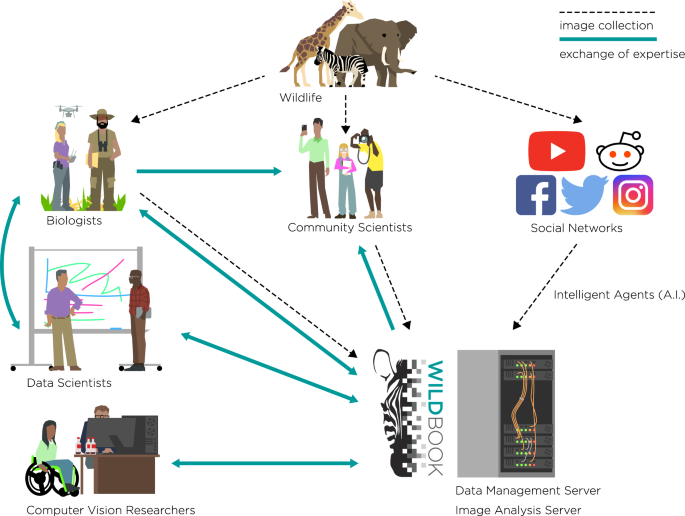Leveraging Artificial Intelligence for Advancements in Animal Science
Dr. Juli Chakma1; Dr. Divyaprakash R. Choravada2
- Division of Animal Nutrition, ICAR-IVRI
- Division of Biochemistry, ICAR-IVRI
E-mail: julichakma2298@gmail.com
Abstract: This article explores the burgeoning field of artificial intelligence (AI) and its transformative impact on animal science. With a focus on precision livestock farming, genomics, disease detection, and overall farm management, AI technologies are revolutionizing traditional practices. This paper delves into key applications, such as precision breeding, disease prediction, and robotic assistance, illustrating how AI is reshaping the landscape of animal agriculture. Drawing insights from recent research, including Tedeschi (2022), Bao and Xie (2022), Ezanno et al. (2021), Stricklin et al. (1998), and De Vries et al. (2023), we highlight the progression of data analytics and artificial intelligence in support of sustainable development in animal science.
In recent years, the integration of artificial intelligence (AI) into the realm of animal science has ushered in a new era of possibilities and advancements. This paradigm shift is particularly evident in precision livestock farming (PLF), where the amalgamation of sensor technologies, data analytics, and machine learning is redefining how farmers manage their livestock.
One noteworthy application of AI in animal science is in precision breeding. Through sophisticated genomic analyses, machine learning algorithms can identify genetic markers associated with desirable traits in animals (Tedeschi, 2022). This information enables farmers to implement selective breeding programs, fostering the development of livestock with improved resilience, productivity, and overall genetic quality.
Disease detection and management represent another critical facet of AI implementation in animal science. By harnessing the power of data analytics and machine learning, farmers can monitor various parameters related to animal health, from behavior patterns to environmental conditions (Bao & Xie, 2022). This proactive approach allows for the early identification of potential health issues, minimizing the spread of diseases and enabling timely intervention.
The field of animal behavior analysis has also benefited significantly from AI technologies. Computer vision, for instance, enables the automated monitoring of livestock behavior, providing insights into stress levels, social interactions, and overall well-being (Ezanno et al., 2021). This information equips farmers with valuable data to optimize animal management practices and improve animal welfare.
In addition to data-driven insights, AI has found its way into the physical realm of animal farming through the use of robotics. Robotic applications, such as automated milking systems and feeding mechanisms, contribute to increased efficiency, reduced labor requirements, and enhanced overall farm management (Stricklin et al., 1998). These technologies not only streamline tasks but also positively impact the welfare of the animals by providing consistent and timely care.
Looking forward, predictive modeling emerges as a powerful tool in the hands of farmers (De Vries et al., 2023). By leveraging AI to analyze historical data, farmers can anticipate challenges ranging from disease outbreaks to market demands. This foresight enables informed decision-making, ultimately contributing to more sustainable and profitable animal farming practices.
As we navigate this intersection of technology and agriculture, it becomes evident that AI is not just a tool but a transformative force in animal science. The synergy between artificial intelligence and animal farming holds the promise of a more efficient, sustainable, and humane approach to livestock management. The future of animal science is undeniably intertwined with the capabilities of AI, offering a pathway to address the evolving challenges and opportunities in the agricultural landscape.
References:
- Tedeschi, L. O. (2022). ASAS-NANP Symposium: Mathematical Modeling in Animal Nutrition: The progression of data analytics and artificial intelligence in support of sustainable development in animal science. Journal of Animal Science, 100(6), skac111.
- Bao, J., & Xie, Q. (2022). Artificial intelligence in animal farming: A systematic literature review. Journal of Cleaner Production, 331, 129956.
- Ezanno, P., Picault, S., Beaunée, G., Bailly, X., Muñoz, F., Duboz, R., … & Guégan, J. F. (2021). Research perspectives on animal health in the era of artificial intelligence. Veterinary research, 52, 1-15.
- Stricklin, W. R., De Bourcier, P., Zhou, J. Z., & Gonyou, H. W. (1998). Artificial pigs in space: using artificial intelligence and artificial life techniques to design animal housing. Journal of animal science, 76(10), 2609-2613.
- De Vries, A., Bliznyuk, N., & Pinedo, P. (2023). Invited Review: Examples and opportunities for artificial intelligence (AI) in dairy farms. Applied Animal Science, 39(1), 14-22.


